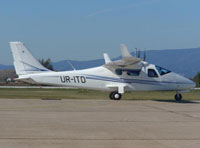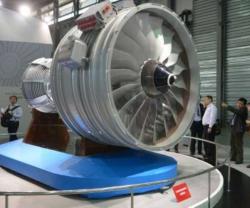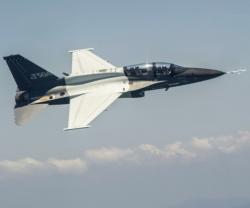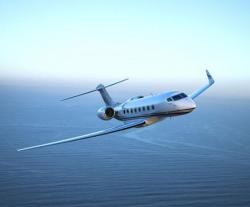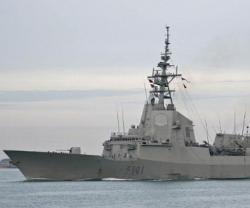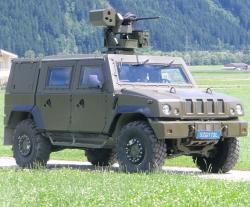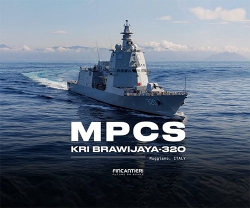Indra’s New Maritime Air Surveillance System at Farnborough
10.07.2012 Asia
The Maritime Light Surveillance System, based on the P2006T MRI aircraft, is presented at the ongoing edition of the Farnborough Aeronautical Fair (9-15 July 2012).
The plane is in the static exhibit area destined for medium surveillance aircraft.
The Maritime Surveillance configuration of the P2006T, which has been designed and developed by Indra, has already received the EASA CS23 aeronautical certification for the modification involved in the surveillance system's installation. Once the fair has ended, the aircraft will travel to Cumberland Airport (near Edinburgh), where the test flights for the Seaspray 5000E electronic scan radar (AESA) it is equipped with will take place.
The appropriate combination of a light twin-engined aircraft with a high wing configuration, of which more than 160 units have been delivered, equipped with a state-of-the-art mission system, an AESA radar, an electro-optical large format high resolution and state-of-the-art system, an AIS vessel identification system and Indra's ISIS mission system, results in an airborne surveillance system that is suitable for operations in maritime areas from the coast to 150 miles outward, with purchase and operating costs that are hard to match.
The characteristics of the AESA radar, specifically of its SAR modes, combined with those of the infra-red camera in the electro-optical system, make the platform especially suitable for environmental monitoring in marine settings.
The airborne system's operations are linked to a mission control centre located on the ground via a state-of-the-art dedicated radio-link and via satellite. This link makes it possible to monitor the mission in real time from the ground as well as the operations of the mission system from the control centre, allowing the system operator to remain on land for the execution of certain missions.
The plane is in the static exhibit area destined for medium surveillance aircraft.
The Maritime Surveillance configuration of the P2006T, which has been designed and developed by Indra, has already received the EASA CS23 aeronautical certification for the modification involved in the surveillance system's installation. Once the fair has ended, the aircraft will travel to Cumberland Airport (near Edinburgh), where the test flights for the Seaspray 5000E electronic scan radar (AESA) it is equipped with will take place.
The appropriate combination of a light twin-engined aircraft with a high wing configuration, of which more than 160 units have been delivered, equipped with a state-of-the-art mission system, an AESA radar, an electro-optical large format high resolution and state-of-the-art system, an AIS vessel identification system and Indra's ISIS mission system, results in an airborne surveillance system that is suitable for operations in maritime areas from the coast to 150 miles outward, with purchase and operating costs that are hard to match.
The characteristics of the AESA radar, specifically of its SAR modes, combined with those of the infra-red camera in the electro-optical system, make the platform especially suitable for environmental monitoring in marine settings.
The airborne system's operations are linked to a mission control centre located on the ground via a state-of-the-art dedicated radio-link and via satellite. This link makes it possible to monitor the mission in real time from the ground as well as the operations of the mission system from the control centre, allowing the system operator to remain on land for the execution of certain missions.
Previous PostEurocopter at Farnborough Airshow
Latest news
Latest events
DefenPol China2025 - 7th Guangzhou International Defense & Police Exhibition & Summit
11 - 12 Jul 2025Nan Fung International Convention & Exhibition Center (NICEC) - ChinaIDEF 2025 Turkey - International Defence Industry Fair
22 - 27 Jul 2025Istanbul Expo Center - TurkeyDSEI 2025
09 - 12 Sep 2025Excel, London - United KingdomIntersec Saudi Arabia
29 Sep - 01 Oct 2025Riyadh International Exhibition & Convention Centre - Saudi Arabia

